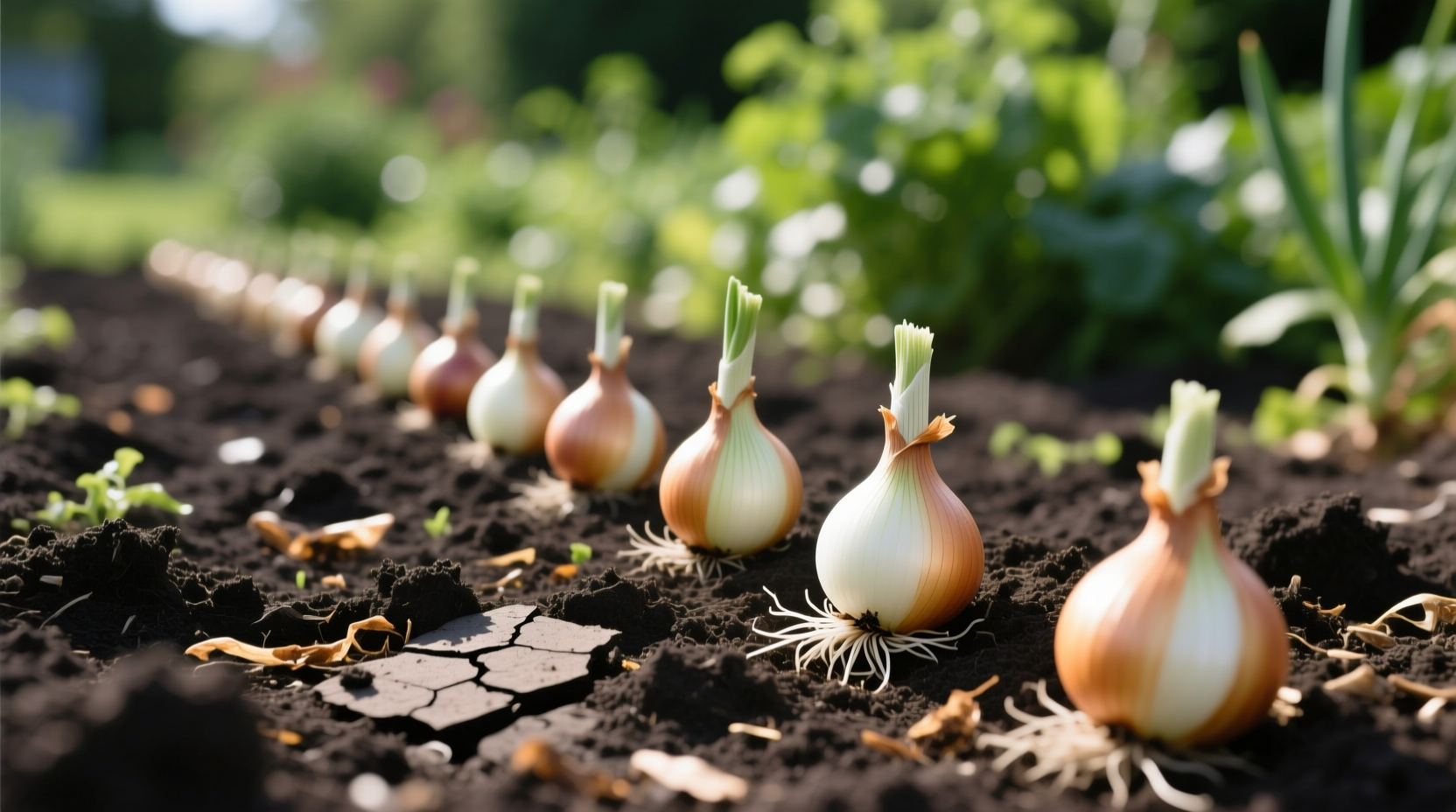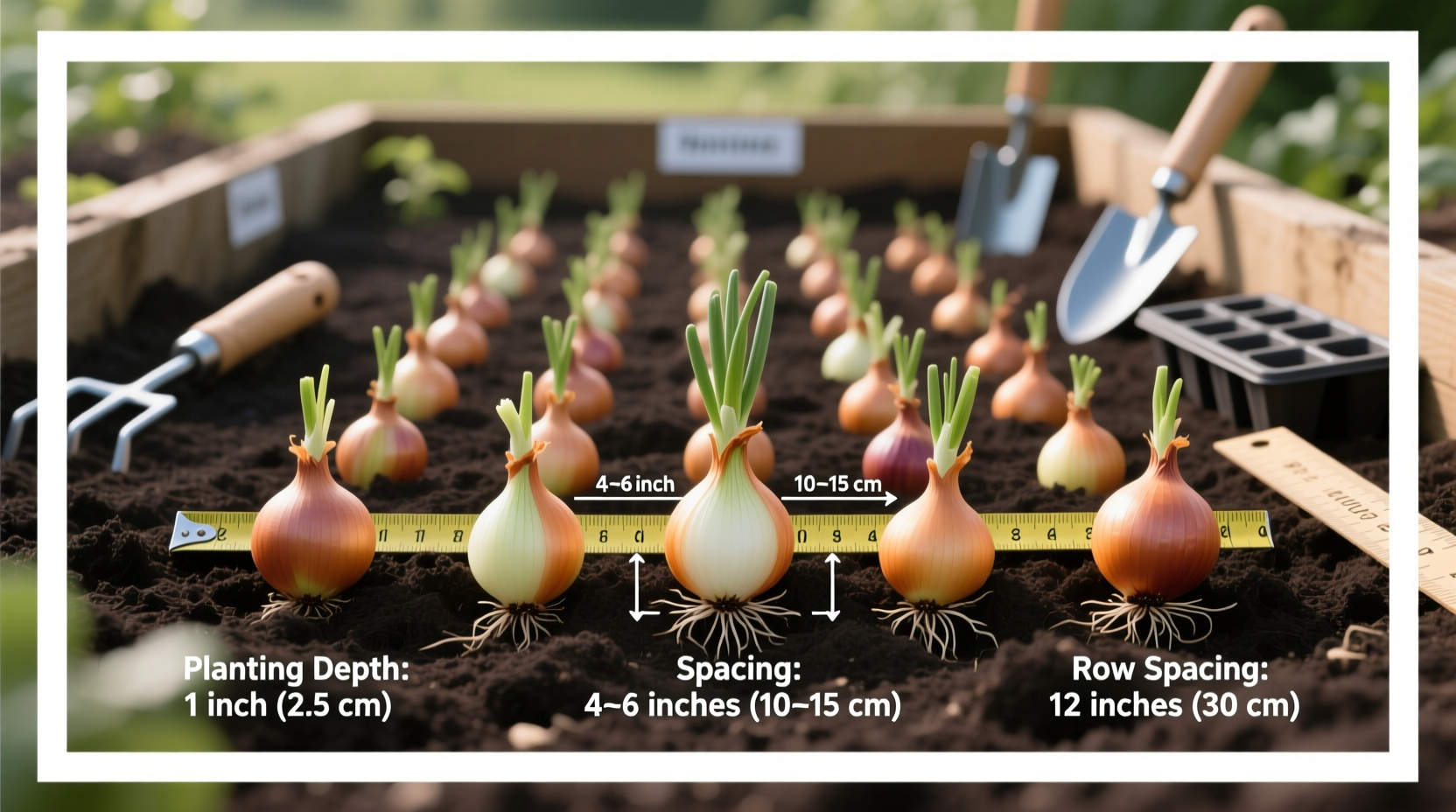Getting onion spacing right separates thriving harvests from disappointing yields. Whether you're a first-time gardener or refining your technique, understanding the precise distance between onion sets directly impacts bulb size, disease resistance, and overall crop success. This guide delivers field-tested spacing recommendations backed by agricultural research—so you can plant with confidence and harvest impressive onions.
Planning Your Onion Planting Layout
Before placing a single onion set in the ground, proper planning prevents common spacing mistakes that compromise your harvest. The ideal spacing depends on both your onion variety and gardening goals.
Professional growers and agricultural extensions consistently recommend 4-6 inches between individual onion sets with 12-18 inches between rows. This configuration allows sufficient room for bulb expansion while maintaining efficient use of garden space. Planting too close creates competition for nutrients and moisture, resulting in smaller bulbs and increased disease susceptibility.
| Onion Type | Individual Spacing | Row Spacing | Planting Depth |
|---|---|---|---|
| Yellow Storage Onions | 4-5 inches | 12-18 inches | 1-1.5 inches |
| Red Onions | 5-6 inches | 15-18 inches | 1-2 inches |
| Green Onions | 2-3 inches | 8-12 inches | 0.5-1 inch |
| Pearl Onions | 3-4 inches | 12 inches | 1 inch |
This spacing comparison from the University of Minnesota Extension demonstrates how requirements vary by onion type. Commercial growers follow these precise measurements to maximize yield while minimizing disease pressure.
Executing Perfect Onion Spacing
Translating spacing recommendations into your garden requires practical techniques. Many beginners make the mistake of planting too densely, hoping for a larger harvest—but this actually reduces overall yield.
For consistent results, use these professional spacing methods:
- String line method: Stretch garden twine between stakes to create straight rows before planting
- Measuring stick: Mark a gardening stick at 4-inch intervals for quick spacing reference
- Grid planting: For raised beds, arrange sets in a triangular grid pattern to maximize space
Plant onion sets with the pointed end up, at a depth of 1-2 inches depending on bulb size. Larger sets need slightly deeper planting. Press soil firmly around each set to ensure good soil contact—this prevents sets from being pushed out during heavy rains.

Contextual Factors Affecting Spacing
While the standard 4-6 inch spacing works for most home gardens, specific conditions require adjustments:
- Soil quality: In rich, amended soil, you can plant toward the closer end of the range (4 inches) as nutrients are abundant
- Water availability: In dry climates or during drought, increase spacing to 6-7 inches to reduce moisture competition
- Growing season length: Shorter seasons benefit from slightly closer spacing to maximize growth time
- Intended use: Green onions can be planted more densely (2-3 inches) since you harvest before bulb formation
The USDA Agricultural Research Service confirms that proper spacing reduces fungal diseases by improving air circulation. Their field trials showed a 23% increase in marketable bulb size when following recommended spacing versus overcrowded plantings.
Troubleshooting Spacing Issues
Even with careful planning, spacing problems can occur. Recognize these common issues:
- Overcrowding symptoms: Small bulbs, yellowing leaves, increased disease incidence
- Underutilized space: Weeds filling gaps between widely spaced plants
- Uneven growth: Inconsistent bulb size indicating irregular spacing
If you notice overcrowding after planting, thin plants by carefully removing every other onion. These thinnings make excellent green onions. For established plantings that can't be adjusted, increase watering and fertilization to compensate for competition.
Maximizing Your Onion Harvest
Proper spacing works in conjunction with other cultural practices for optimal results:
- Apply 2-3 inches of mulch after planting to conserve moisture and suppress weeds
- Water consistently—onions need 1 inch of water weekly during bulb formation
- Fertilize with balanced fertilizer when tops reach 6 inches tall
- Avoid high-nitrogen fertilizers late in the season which promote foliage over bulbs
Remember that spacing requirements differ between onion sets, seeds, and transplants. Sets (the small dormant bulbs) need less space than seedlings but more than direct-seeded onions. This distinction explains why many gardeners get confused about proper spacing—the method matters as much as the measurement.
Frequently Asked Questions
Can I plant onion sets closer than 4 inches for a larger harvest?
No, planting closer than 4 inches reduces bulb size significantly. Research shows overcrowded onions produce bulbs 30-50% smaller than properly spaced plants. The competition for nutrients and moisture prevents optimal bulb development.
What happens if I plant onion sets too far apart?
Excessive spacing (beyond 6 inches) wastes garden space and allows weeds to establish more easily. While individual bulbs may grow slightly larger, your overall yield per square foot decreases substantially. The optimal balance is 4-6 inches for maximum harvest efficiency.
How deep should I plant onion sets?
Plant onion sets 1-2 inches deep with the pointed end facing up. In heavier soils, plant shallower (1 inch); in sandy soils, plant slightly deeper (1.5-2 inches). Proper depth ensures good root establishment without hindering bulb expansion.
Do different onion varieties require different spacing?
Yes, larger varieties like 'Walla Walla' need 5-6 inches between plants, while smaller varieties like 'Candy' do well at 4 inches. Green onions can be planted as close as 2 inches apart since you harvest before bulb formation. Always check specific variety recommendations when available.











 浙公网安备
33010002000092号
浙公网安备
33010002000092号 浙B2-20120091-4
浙B2-20120091-4